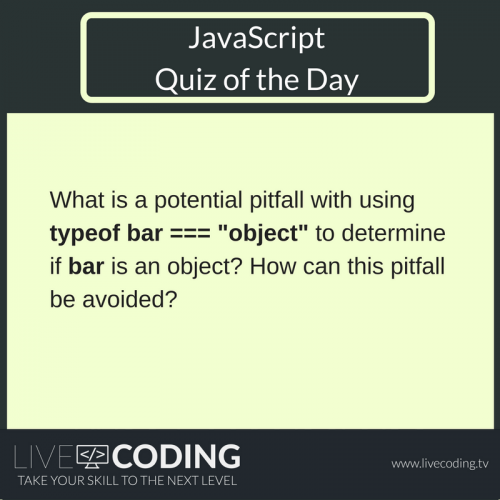Answer
Although typeof bar === “object” is a reliable way of checking if bar is an object, the surprising gotcha in JavaScript is that null is also considered an object!
Therefore, the following code will, to the surprise of most developers, log true (not false) to the console:
|
1 2 |
var bar = null; console.log(typeof bar === "object"); // logs true! |
As long as one is aware of this, the problem can easily be avoided by also checking if bar is null:
|
1 |
console.log((bar !== null) && (typeof bar === "object")); // logs false |
To be entirely thorough in our answer, there are two other things worth noting:
First, the above solution will return false if bar is a function. In most cases, this is the desired behavior, but in situations where you want to also return true for functions, you could amend the above solution to be:
|
1 |
console.log((bar !== null) && ((typeof bar === "object") || (typeof bar === "function"))); |
Second, the above solution will return true if bar is an array (e.g., if var bar = [];). In most cases, this is the desired behavior, since arrays are indeed objects, but in situations where you want to also false for arrays, you could amend the above solution to be:
|
1 |
console.log((bar !== null) && (typeof bar === "object") && (toString.call(bar) !== "[object Array]")); |
Or, if you’re using jQuery:
|
1 |
console.log((bar !== null) && (typeof bar === "object") && (! $.isArray(bar))); |
If you want to explore other questions about JavaScript, you can check our videos section! Below we have some examples:
You can also subscribe to some channels that broadcast in JavaScript, such as the following:
Another cool way to find out interesting things about JavaScript is to access our project page!









 jessered
jessered